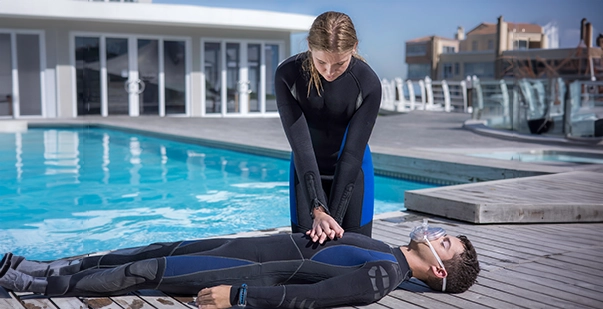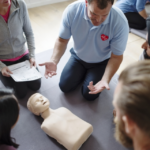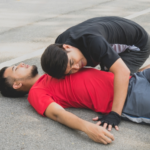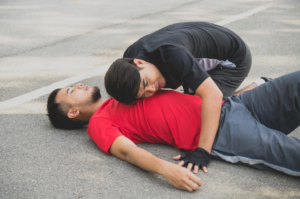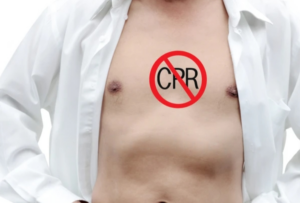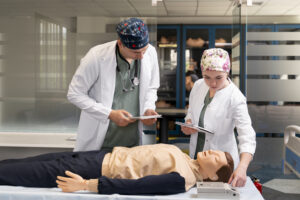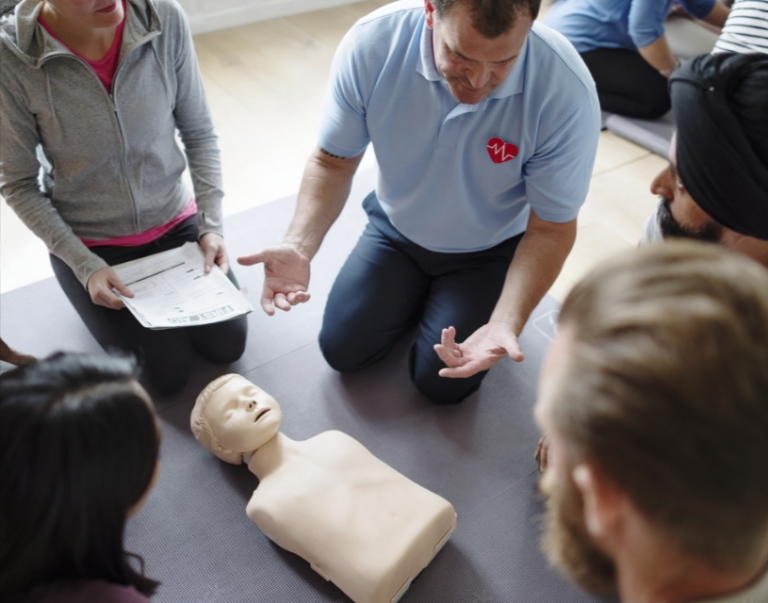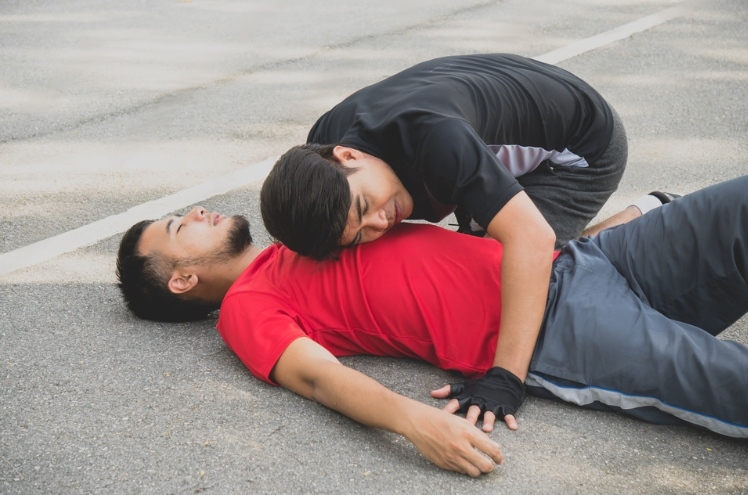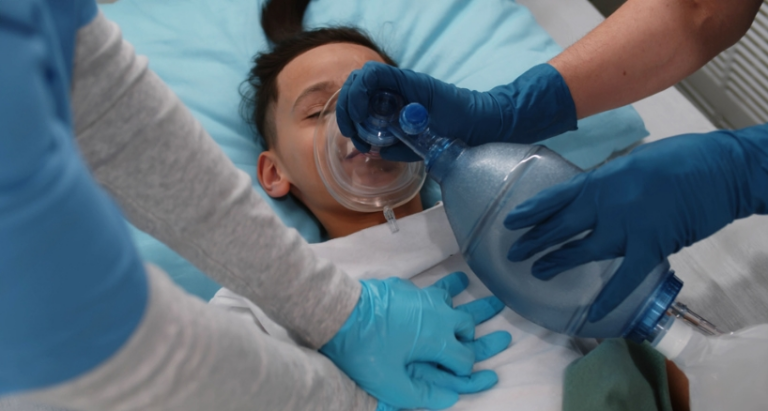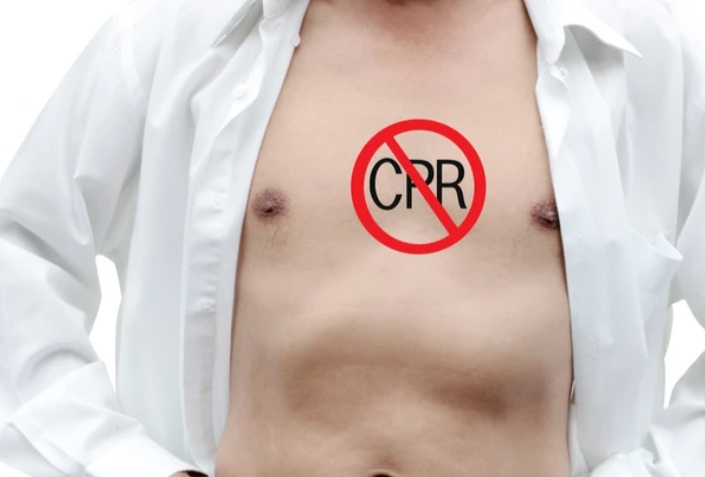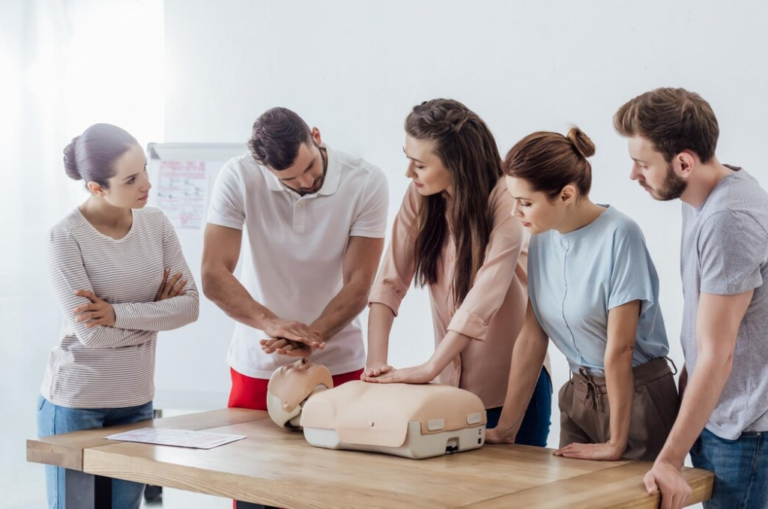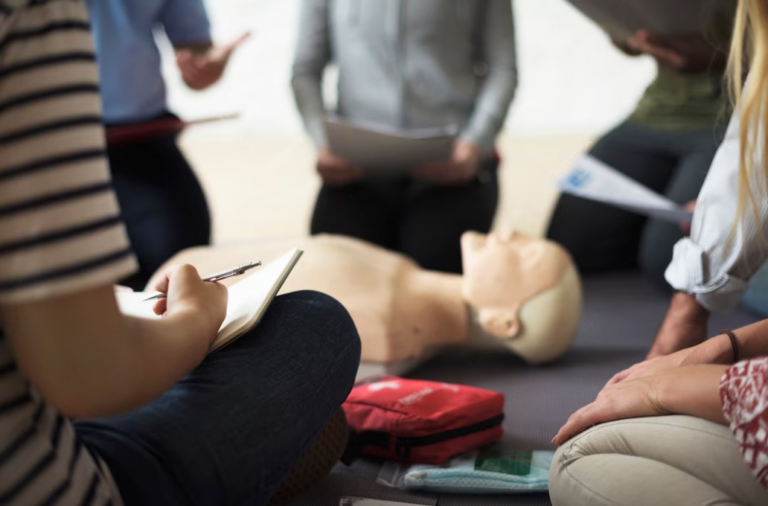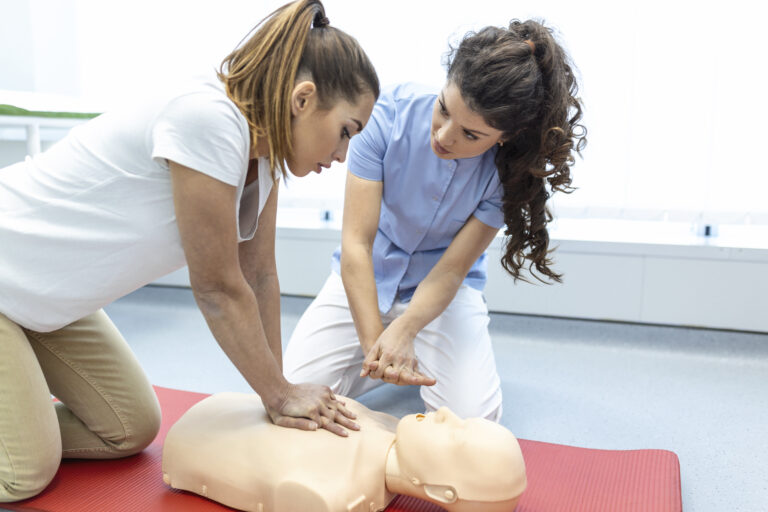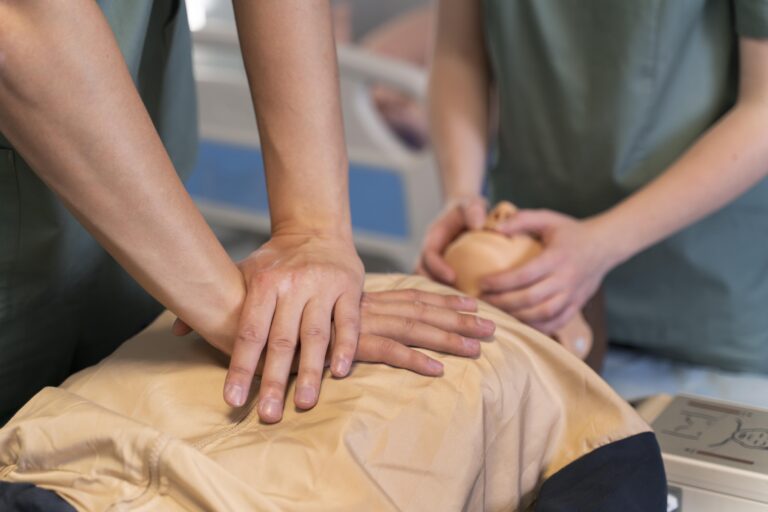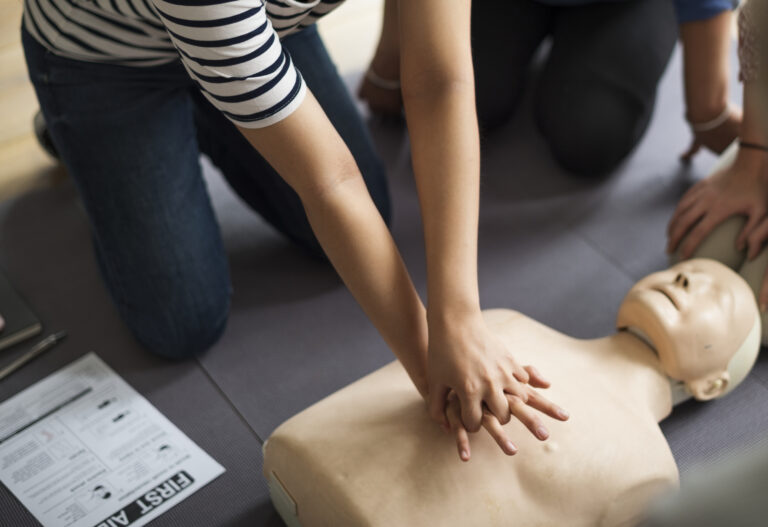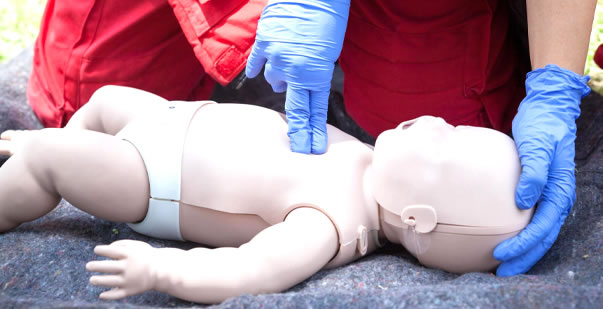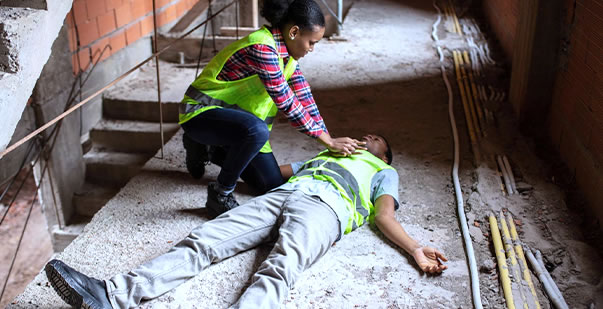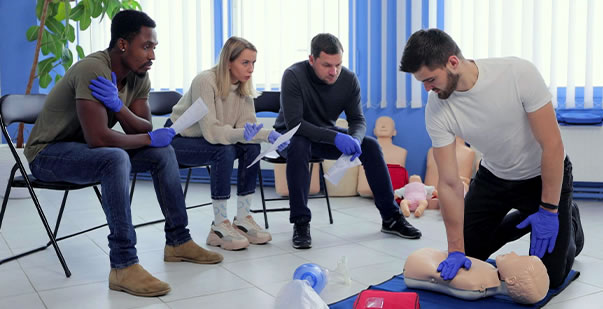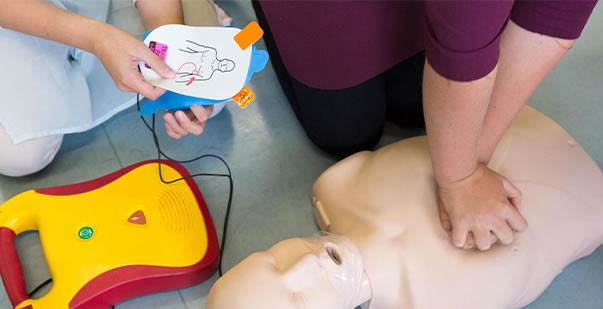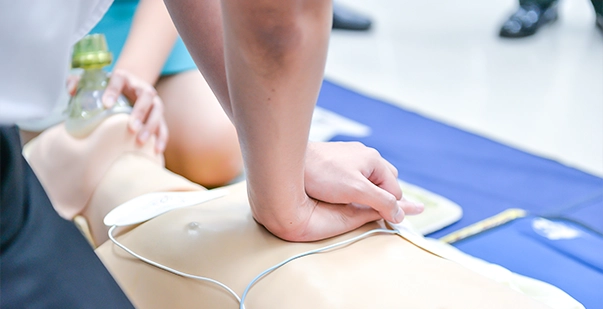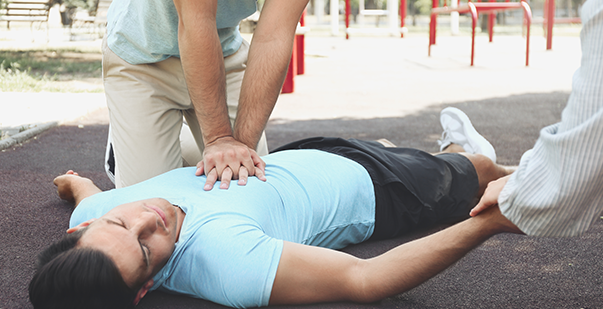Did you know that cardiac arrest accounts for 75% of deaths during sports events? every year, thousands of athletes, spectators, and even coaches experience sudden cardiac arrests (SCA) during sporting activities. Shockingly, SCA is one of the leading causes of death in the United States, claiming over 350,000 lives annually. Playing a sport increases the heart rate to produce more energy. The process also releases chemicals that help players stay in shape and gain a competitive edge. But amidst the thrill of competition, ensuring the safety of athletes and spectators is crucial.
Immediate medical response is crucial in these emergencies. Without prompt intervention, the chances of survival decrease rapidly. That’s why having trained personnel equipped with CPR skills and AED devices on-site is paramount.
Explore the life-saving capabilities of CPR and AED during sports events. Understand why these interventions are not just game-changers but lifesavers on the sports field. From unexpected cardiac emergencies to immediate responses, discover how these essential skills can redefine safety in sports.
How can CPR help during sports?
CPR (Cardiopulmonary Resuscitation) plays a crucial role in providing immediate assistance during sports-related emergencies, particularly in cases of sudden cardiac arrest (SCA). Here’s how CPR can help during sports:
- Restoring Circulation: SCA occurs when the heart suddenly stops beating effectively, leading to a loss of consciousness and cessation of breathing. CPR involves chest compressions that manually pump blood through the body, helping to restore circulation and oxygenation to vital organs, including the brain.
- Buying Time: In the event of SCA, every minute without CPR decreases the chances of survival by 7-10%. Prompt initiation of CPR can buy precious time until emergency medical services (EMS) arrive on the scene with advanced life support measures.
- Maintaining Brain Function: Oxygen deprivation following SCA can quickly lead to brain damage or even death. CPR helps to maintain blood flow to the brain, preserving brain function and increasing the likelihood of a positive outcome once medical professionals take over.
- Supporting Defibrillation: CPR is often performed in conjunction with AED (Automated External Defibrillator) use. While AEDs deliver a shock to restore the heart’s normal rhythm, CPR helps circulate the blood, increasing the likelihood of a successful defibrillation.
- Empowering Bystanders: Sporting events often involve large crowds, including spectators who may witness an emergency. Training bystanders in CPR empowers them to take immediate action, potentially saving lives before EMS personnel arrive.
CPR serves as a critical intervention during sports-related emergencies, offering the best chance of survival for individuals experiencing sudden cardiac arrest. By prioritizing CPR training and AED accessibility at sporting events, communities can enhance safety and preparedness, ensuring swift response and positive outcomes in times of crisis.
The ABCs of Proper CPR in Sports
Empower yourself with the understanding of the ABC’s of CPR to ensure seamless delivery during emergencies.
- Airway:
- Check if the person’s airway is clear. If not, gently tilt their head back to open the airway. You should never give CPR with a choked airway as it will worsen your efforts.
- Breathing:
- Look, listen, and feel for breathing. If the person is not breathing, give two rescue breaths. Pinch their nose, give mouth to mouth, and deliver a breath. You must wait until the chest rises before taking a second breath.
- Compressions:
- If there’s no pulse, start chest compressions. Place your hands on the center of their chest and push hard and fast. Do 30 compressions, then give two more rescue breaths. Keep repeating.
Remember, call for help and use an AED if available. It’s essential to act quickly and get adult assistance.
Understanding the Risks:
Sporting events, while exhilarating, can also present potential risks and medical emergencies that require immediate attention. Here, we’ll delve into some common incidents and emphasize the critical need for prompt medical intervention:
- Sudden Cardiac Arrest (SCA): SCA is a life-threatening condition where the heart suddenly stops beating effectively. It can strike athletes of any age or fitness level, often without warning signs. Without immediate intervention, SCA can be fatal within minutes.
- Heatstroke: Intense physical exertion, particularly in hot and humid conditions, can lead to heatstroke. This occurs when the body’s temperature regulation mechanisms fail, resulting in a dangerously high body temperature. Heatstroke requires rapid cooling and medical treatment to prevent organ damage and death.
- Traumatic Injuries: Sports, especially contact sports, carry the risk of traumatic injuries such as concussions, fractures, and sprains. These injuries can occur suddenly and may require immediate medical attention to prevent further complications.
Prompt Medical Intervention:
In such emergency situations, prompt medical intervention is paramount. Every minute counts, and delays in treatment can have serious consequences. Here’s why immediate action is crucial:
- Sudden Cardiac Arrest: CPR and early defibrillation with an AED are essential for increasing the chances of survival in cases of SCA. Immediate bystander intervention can double or even triple the likelihood of survival.
- Heatstroke: Rapid cooling measures, such as cold water immersion or ice packs, are critical in lowering body temperature and preventing heatstroke complications. Delayed treatment can result in organ damage or death.
- Traumatic Injuries: Early assessment and stabilization of traumatic injuries can prevent further damage and improve outcomes. This may involve immobilization, hemorrhage control, and transportation to a medical facility for further evaluation and treatment.
By understanding the potential risks and the importance of prompt medical intervention, organizers, coaches, and participants can take proactive measures to ensure the safety and well-being of everyone involved in sporting events. From implementing emergency action plans to providing training in CPR and first aid, prioritizing preparedness can help mitigate risks and save lives.
Common Sport-Related Emergencies
In sports, various emergencies can occur. Here are some common sport-related emergencies:
- Sprains and Strains: Injuries to muscles or ligaments are often caused by sudden movements or overexertion. As an athlete, you must never overlook an injury and ensure that you seek help.
- Fractures: Any broken bones resulting from injuries or falls could cause a fracture. If you do not get it treated on time, the bones may fix in the wrong shape, resulting in lifelong deformity.
- Concussions: Blows to the head commonly cause head injuries that affect brain function. A majority of sports have the threat of head injuries; hence, protective gear is a must.
- Heat-Related Illness: Conditions like heat exhaustion or heat stroke due to prolonged exposure to high temperatures during sports.
- Cardiac Emergencies: Sudden cardiac events, such as cardiac arrest or heart attack, require immediate intervention.
- Asthma Attacks: Breathing difficulties due to exercise-induced asthma or other respiratory conditions. Most sports require running, and an ailing sports person could fall prey to respiratory distress.
- Dehydration: Loss of fluids during intense physical activity leads to symptoms like dizziness and weakness.
- Allergic Reactions: Responses to allergens, like insect stings or certain foods, can be severe and require prompt treatment.
Once you understand these medical emergencies, the importance of CPR and AED during sports becomes evident.
How do you become CPR-certified if you’re an athletic coach?
Becoming CPR-certified as an athletic coach is crucial for ensuring the safety of athletes. Here are five methods to achieve CPR certification:
- Local Training Centers: Check with local organizations for CPR certification classes. They often conduct in-person training sessions with certified instructors.
- Online CPR Courses: Many organizations offer CPR certification courses online. These courses often include instructional videos, interactive modules, and a practical skills assessment. Ensure that the online course is accredited and recognized.
- Community Colleges and Universities: Local educational institutions often provide CPR certification courses. These courses may be part of a broader first aid or sports safety program. Check with nearby community colleges or universities for availability.
- Athletic Associations: Sports-related organizations and associations may offer CPR certification for coaches. Contact local or national sports associations to inquire about available training opportunities.
- Healthcare Providers: Some healthcare providers and hospitals offer CPR certification courses. These courses may cater to specific professions, including athletic coaches. You could also contact local healthcare facilities and ask about the courses offered.
Read More: https://cprcertificationnearme.co/blog/understanding-the-5-elements-of-basic-life-support/
Conclusion
The presence of CPR (Cardiopulmonary Resuscitation) and AED (Automated External Defibrillator) at sporting events is not just beneficial – it’s absolutely essential. These life-saving resources can mean the difference between life and death in critical situations such as sudden cardiac arrest (SCA) or other medical emergencies.
By ensuring that CPR and AEDs are readily available and accessible, event organizers demonstrate a commitment to the safety and well-being of participants and spectators alike. Investing in medical training for staff and volunteers further enhances preparedness, empowering individuals to respond effectively in emergencies and potentially save lives.
Ultimately, proactive measures such as implementing emergency action plans, providing CPR and first aid training, and prioritizing safety equipment can significantly enhance the overall safety of sporting events. By prioritizing safety measures and being proactive in addressing potential risks, organizers can create an environment where participants and spectators can enjoy sports with peace of mind, knowing that their well-being is safeguarded.

